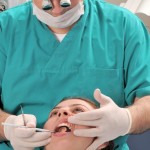
Diagnosis of the condition of the pulp is important for successful endodontic treatment. When pain comes from the tooth with a vital pulp reversible or irreversible pulpitis are recognised based on subjective and objective findings. Recently an extended diagnostic scheme of initial, mild, moderate, and severe pulpitis. has been proposed with pulp treatments varying from indirect or direct pulp capping to full pulpotomy. Diagnosis of the status of the inflamed pulp would be important to treatment provision.
The aim of this review was to evaluate the clinical tests for sensibility testing, determination of biomarkers and pulp bleeding with regard to their suitability to correctly diagnose the condition of the pulp tissue.
Methods
The reviews protocol was registered on PROSPERO. Searches were conducted in the Cochrane Central Register of Controlled Trials (CENTRAL), Medline/PubMed, Scopus, Web of Science and Google Scholar databases. This was supplemented by searches of the journals, International Endodontic Journal, Journal of Endodontics, Journal of Dental Research, Journal of Dentistry, and Clinical Oral Investigations. Randomised controlled trials [RCTs], comparative clinical trials [CCTs], retrospective and prospective comparative cohort and case-control studies assessing the accuracy of detecting pulp vitality, level of pulpal inflammation and pulpal condition published in English were considered. Two reviewers independently screened and selected studies, extracted studies and assessed risk of bias using the QUADAS-2 tool, the Newcastle-Ottawa scale (NOS) for noncomparative, nonrandomized studies and the Newcastle-Ottawa Quality Assessment scale adapted for cross-sectional studies. A third reviewer was consulted in cases of disagreement. A narrative summary of the findings was presented.
Results
- 29 publications from 28 studies were included.
Pulpal vitality (12 studies)
- 4 studies were assessed as being of moderate quality using the NOS the remainder were unsatisfactory.
- 1 study (80 patients) showed pulse oximetry to be reliable with an accuracy of 97.5% with a sensitivity of 100% and specificity of 95%.
- Pulse oximetry correctly identified pulp necrosis (sensitivity 93%, specificity 100%) [1 study]
- TFE (1,1,1,2-tetrafluoroethane) proved to be more reliable than carbon dioxide (1 study).
- Accuracy rates for electrical pulp tester (EPT) ranged from 75.3 to 90 % (10studies).
Diagnostic Accuracy (10 studies)
- 3 studies were assessed as being of moderate quality using the NOS the remainder were unsatisfactory.
- Correlation between clinical symptoms or tests and the histological condition of the pulp tissue was poor in nearly all studies.
- Some correlation between the presence of pain, a history of previous pain and the occurrence of spontaneous pain was reported in some studies.
Expression of biomarkers (6 studies)
- 5 studies were assessed as being of moderate quality and one unsatisfactory using the NOS.
- The expression of some proteins/cytokines and enzymes was significantly increased in inflamed pulp tissue in teeth with a clinical and histological diagnosis of reversible and irreversible pulpitis.
Conclusions
The authors concluded: –
The effectiveness of diagnosing pulpitis is low due to limited scientific evidence regarding the accuracy and reproducibility of diagnostic tests. There is a lack of evidence to determine the true status of the pulp or to identify prognostic indicators allowing for a reliable pre-operative estimation of the outcome of vital pulp treatment.
Comments
The reviewers have searched a broad range of databases and dental journals for this review, the protocol for which was registered on PROSPERO. The authors were seeking to assess the effectiveness of diagnosing pulpitis in patients with pulpitis with no pain, pulpitis with nonspontaneous pain and pulpitis with spontaneous pain. As the authors highlight that the availability of a reliable reference (gold) standard in clinical conditions and a subjective pain response. While the authors identified 28 studies, they considered that the heterogeneity was too marked to allow pooling of the data. Previously we have considered 2 reviews on this topic, a 2017 review by Alghaithy and Qualtrough (Dental Elf – 20th Mar 2017),only included 8 studies and also only undertook a narrative summary while the 2018 review by Mainkar and Kim of this topic (Dental Elf – 18th Jun 2018) included 28 studies and undertook a meta-analysis of 5 pulp tests suggesting that laser doppler flowmetry and pulse oximetry were the most accurate methods. None of the studies included in this new review was assessed as being of high quality with a majority being of unsatisfactory quality. Consequently, further primary studies in this area should be reported using STARD and systematic reviews should use the approaches outlined in the Cochrane Diagnostic Test Accuracy Reviews Handbook .
Links
Primary Paper
Donnermeyer D, Dammaschke T, Lipski M, Schäfer E. Effectiveness of diagnosing pulpitis: A systematic review. Int Endod J. 2022 May 10. doi: 10.1111/iej.13762. Epub ahead of print. PMID: 35536159.
Other references
Dental Elf – 18th Jun 2018
Dental Elf – 20th Mar 2017
Dental pulp testing: insufficient evidence to evaluate clinical performance
